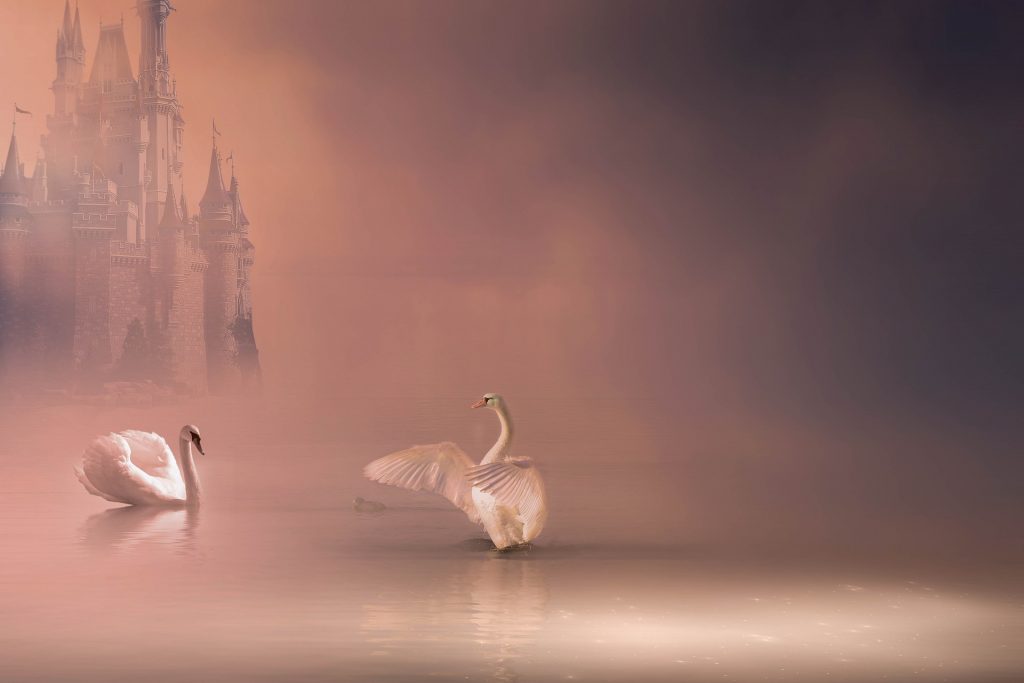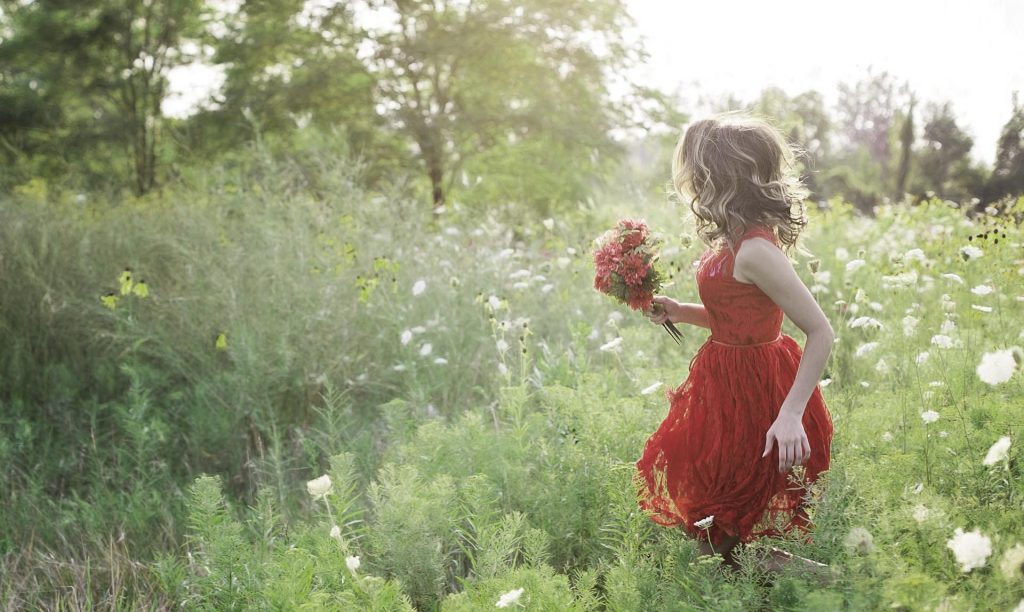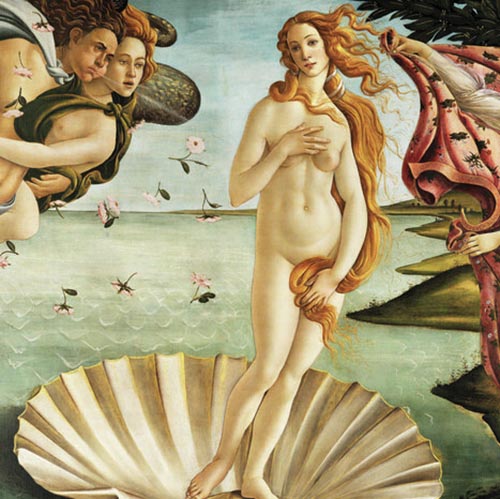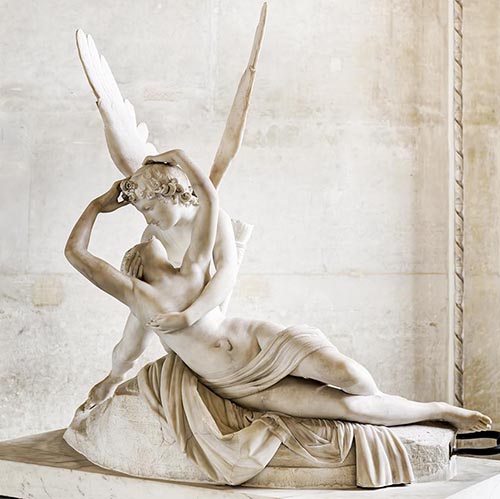
What is a Trauma Bond ?
A trauma bond in a toxic relationship is a powerful emotional connection that forms between the narcissist and their partner. It develops through the characteristic cycle of abuse found in these relationships, which involves intermittent reinforcement and alternates between periods of intense lovebombing, affection, and episodes of mistreatment. This pattern fosters confusion and emotional dependency in the partner.
The partner of the narcissist feels trapped and torn between the idealisation phase which gives hope, and the pain inflicted during the toxicity of the devalue discard phase which follows. This cycle triggers intense emotional highs and lows, much like an addiction, making it difficult to leave the relationship despite the harm it causes. The narcissist may exploit their partner’s vulnerabilities; insecurities or past traumas, in order to maintain control and keep the bond intact. Further feelings or fear, guilt, and hopes that the relationship will improve, induces the partner to rationalise or minimise the bad behaviour, and cling to good moments as signs of possible change.
Lingering trauma bond after the end of a toxic relationship
In the early stages of healing from a relationship with a narcissist, the person healing may be very emotionally dis-regulated due to the extreme stress they have endured over months or years. The invisible wound of the trauma bond, the ripping and tearing away of the relationship leaves the survivor haemorrhaging emotionally and spiritually. The devastation caused leaves them feeling depleted, an empty shell, alarmingly devoid of any internal healing resources, and often in fear for their very survival.
It is a shock even to themselves, to feel how profound and devastating the effect of this trauma is, despite knowing that leaving or being abandoned was really the best thing that could have happened. Friends, family, even health providers also find it hard to understand why the aftermath seems more difficult to move through, than the staying in relationship itself. With the best of intentions, people ask why you still miss the abusive person, why you cannot just heal and start living your best life. Survivors say that you cannot understand this if you haven’t lived through it yourself, the whole thing is complex on too many levels.
Fantasy Romance and the Trauma Bond
Close relationships with Narcissists involve specific predictable patterns of entanglement and enslavement, which are best seen only in hindsight. The narcissist chooses a partner based on certain criteria. The first of these is that the partner must have the capacity to love them unconditionally; that like a parent, they will adore and admire them, later become dependent on them, and eventually fear them. This person will also provide narcissistic supply; things like sex, material goods, status, servitude and so on. The more that the partner brings in the better, and over time, the narcissist will try to extract it all.
There is a deliberate process that the narcissist performs in grooming their potential mate. It begins with drawing the potential partner into a world of Fantasy Romance, a delusion which they create. The delusion will be customised to the narcissist’s partner, based on close observation of their values and deepest desires. They will then serve up an illusion of this to them.
The narcissist quickly establishes themselves as the controller of the Fantasy Romance dynamic. This may be done overtly, or covertly, they may declare or demonstrate that they are a dominant masculine man with traditional values, and expectations in the relationship. Women narcissists will declare themselves as entities to be revered and submitted to in every matter. They may present themselves as someone with expertise to lead the relationship forward in a certain direction, for example when embarking on a relationship with business, family or fitness goals, anything like this. In another way, the narcissist may also establish themselves as top of the hierarchy by presenting themselves as a victim, with alcohol or drug issues for example, and they will control and dictate based on their many needs and vulnerabilities, real or perceived.
How does a fantasy romance establish a trauma bond
The trauma bond happens gradually and over time. In the idealisation stages, the narcissist holds up a gilded looking glass, paints a beautiful portrait, and the partner feels seen, validated, loved and appreciated. They see themselves through the narcissist’s adoring eyes, and fall in love with their own image, their unique qualities, deeply and maybe for the first time. This is a powerful experience, bonding the narcissist to the partner. The connection mimics the strong unconditional love of the parent towards their child, and also the dependent love of the child to the parent, both are very strong and primal bonds.
With the hierarchy in place, the narcissist begins to restructure, reshape and form their partner into submission, compliance and obedience. They will keep the fantasy romance going by continued love-bombing, attributing meanings to everything that happens, creating memories with photographs, love notes, gifts, music, celebrations and anniversaries, anchors and reminders to keep the partner invested in the illusion. The remnants of all these persist after the relationship ends, compounding the trauma.
Progressive reinforcement of the trauma bond
Soon enough, the narcissist will test the partner’s loyalty and compliance by randomly acting out of character. They will create drama and make unreasonable even bizarre demands, with urgency, coercion, or threats. This in itself can be quite traumatising, as when denied or criticised or threatened with abandonment, the narcissist can cause alarm and distress by threatening to harm themselves, or their partner.
Increasingly regular tantrums habituate the partner to poor treatment and disrespect through continued outbursts and fabricated accusations. The partner is pushed to suspend and eventually dismantle their boundaries, to compromise their values and even violate their own moral rules of conduct, in order to try to keep the peace. This causes loss of self esteem, and ability to trust in their own judgement.
The narcissist isolates their partner by becoming jealous of their family, friends, social networks, even pets. They are seemingly threatened by anyone and everyone and accuse the partner of cheating, criticise their parenting style by telling them they spend too much caring for, or doing things for their family members. Eventually, they become isolated and ever more dependent on the narcissist, and they become demoralised and easier for the narcissist to control.
The narcissist rewards compliance from the partner by increasing and intensifying aspects of the fantasy romance; feigning devotion and the uniqueness of the love you share, a romance destined to last forever, unlike any other. They gaslight in order to precipitate, inflict upon the partner a captivating, delusional reality, establishing a cult-like psychosis based on a spectre of lies.
Breaking the Spell of the Fantasy Romance
When the partner does not comply and stands up for their own needs and desires, they step out of the haze of the fantasy, breaking the unwritten rules of the romance. The narcissist will quickly begin devaluing and discounting them as a viable partner/object, and they will likely be violently ejected from the shared fantasy romance. In that moment, the partner has no value to the narcissist; as an object to serve and supply the narcissist, they are completely stripped of any value.
Gone is the love-bombing and unconditional ‘forever fantasy romance’, the partner has been knocked off the pedestal of idealised status. When the relationship with a narcissist ends, regardless of how it ends, the curtain is torn away, and the horror show is exposed. It becomes evident that the narcissist never loved, cared or invested in their partner, and in fact had some form of discard and exit strategy in place, from the start.
The narcissist’s partner on the other hand has invested a lot in the relationship, sometimes everything. Love, affection, their personal and professional reputation, services, financial assets, sometimes losing their work or business, family relationships, independence, agency, self esteem, eventually their emotional and physical health. Being a normal sentient being with the capacity for love and affection, it is hard to accept that the person who they believed loved them so deeply, is actually and empty shell, devoid of caring about anything other than themselves and what they could extract from others.
The mirror and the idealised reflection lies on the floor in shards, and no glue will mend it, though we may try. The mirror which the narcissist once held up shows a fractured distortion, the illusion is lost.
Loving yourself after toxic relationship
It is a mistake to think that love and romance exists only out there, out of ourselves, and that it is something we can only attract through or with another person. Wise people tell us to take a little time to be with ourselves, to learn to love ourselves after a bad breakup like this. Survivors, especially those who have not grown up with healthy love, care, and attachment from their parent figures, may have no idea what this means. All their life, they may have believed that love is something external to themselves, something out there, that they needed to attract and obtain somehow.
Love itself may feel like a betrayal now; how was it possible for love to be the thing that now brings only torment, and pain which is almost unbearable? One of the most beautiful things about healing from Narcissist relationships, is the re-discovery of self, and falling in love with one self in a brand new way. You, with your unique skills talents and knowledge are in this world for a reason, and in order to continue to make this world a better place, you have to be functioning at your best. For this, you need to put yourself first, make yourself a priority, and especially right now, as you heal.
In simple terms, self love is to know how to parent oneself; care, nurture, comfort like a mother, provide and protect the self like a father. (More about this in a later section.) In addition, this should be fun, so we could add ‘bring romance into your life’ like a lover. This section will cover some ways to bring more romance into your life; not one built on shifting sands, but this time, a romance built on solid rock. It will help to begin the process of becoming rooted more deeply in the world, to become more resilient, so when the hurricane winds blow again, you will bend and sway, but you will remain firmly rooted.
The Greatest Romance

Cultivating romance in your daily life is about making life extraordinary. It is to shift out of the modes of convenience, autopilot habits, and preconceived expectations. It is about full commitment to live in the present moment and experience the world with all your senses. It involves embracing mindfulness and perceiving life through the lens of an artist, photographer, painter, musician, or writer. It is a fusion of heightened awareness, creativity, and escapism at once.
If you really look, there is so much beauty in everything, even and especially in the mundane; in the shocking, the tragic, the inconvenient. It is a matter of how you frame the things that are part of your daily experience. Your experience is never mundane because it is unique to you, and has the hallmarks of your own ways of acting in it. Walking on a foggy, drizzly morning, with the sky a soft white and where the horizon between sea and sky disappears in the mist, you may hear, out of the relative silence, a gentle plink of a wooden chime as it resonates from a nearby garden. This is beauty rising out of the mundane, in the exact moment that you pass by, as if meant just for you if you see it that way. A kiss on the forehead; what is its purpose? To feel seen. It is similar to that: the world sees you, and in turn, you see yourself.
The seasons, the day’s weather, the movement of light, natural or artificial, tones and hues of the colours around you, patterns of nature or architecture around you, the soundscape of your environment, human interaction, animals you see, details that catch your eye, these are all things that bring beauty and romance into your day, and like a photographer or film-maker you can observe and bring out the beauty of it.
Seeing and experiencing the world is the key to the romance of it, observing the changing seasons; the earliest green buds on trees in spring, waiting to burst into life and never to be denied this. Collecting beautiful autumn leaves, like love letters, every one more beautiful than the last. The peace of nature asleep in winter, all the unseen creatures slumbering deep inside trees and burrows. Look at things from far away, as a whole, a blur, an underpainting, a minimalist work in minimal hues. View ordinary things close-up to discover the extraordinary; its abstract forms, colours and never seen details. Listen and study the music which moves you, to get deeper layers of appreciation from it. Add music to beautiful things, like a walk through a beautiful park with classical or operatic music in your earphones. It is transformative. The context of everyday objects and experiences alters how we perceive them, and it is entirely in our power to alter and elevate these into something extraordinary. Beauty exists everywhere once you to see it, and all you have to do is engage the senses and observe with fresh eyes. Romance is about experiencing the beauty which we choose to see.
Orchestrating a new romance in your life
Romance transcends the routine and mundane aspects of daily life, providing a space where desires for beauty, passion and meaning finds fulfilment. Seeking romance fulfils a spiritual or symbolic need, offering metaphors for experiences of love, power and identity. It provides intrigue and enchantment as we weave narratives and stories, and abnegates against the rational, material aspects of modern culture. We choose this by reaffirming the value of emotional and aesthetic experiences in our world, and rewriting the meaning of romance and self love in our lives.

How to Romanticise your Life
Curate a Romantic Environment
Design a romantic and inviting space in your home or outdoors to serve as your personal sanctuary. Adorn it with fresh arrangements of flowers or plants—whether purchased or foraged—and include beautiful or meaningful objects that reflect who you are, but independent of any past relationships. Consider keeping a journal or a collection of books you love, such as poetry, art, or inspirational works, that you can open and explore as the mood strikes. Add personal touches like handwritten notes, treasures from nature, or small keepsakes that are pleasant to hold. Enhance the atmosphere with soothing scents – candles, essential oils, or luxurious hand lotions – to create a space that feels serene and uniquely yours.
Romantic Personal Rituals
Create a personal ceremony to mark a chosen moment and bring a romance to it. Light a candle and write a daily devotion or poem to yourself, focusing on the steps you have made forward. If you are finding yourself in tears every day, make a ritual, where you might run a fragrant bath, light candles, put on some beautiful music, and cry for an hour there. Know that this too shall pass. Create daily self care rituals, for example a morning routine to get off to a good start.
Romantic Meals and Dining Occasions
Stage a romantic dinner, tea ceremony, coffee ritual or similar based on a different time in history, or a different culture. For example, you could look into typical meals from the Georgian times, using English China and silverware from that time period, listen to a playlist of music from that time, and place a vase of fresh roses on the table as a centrepiece. You could create a Japanese meal with chopsticks, Japanese tea set, play Japanese ambient music, and burn Konuboku sandalwood incense. You could go Middle Eastern with music from that region, rich oil room scent incense, eat on the floor on an embroidered blanket or rug, eat with your hands, drink cardamom infused tea or coffee, listen to music or watch the beautiful film Silences of the Palace or Aladdin if you have children.
For something spicier, you could cook some Creole cuisine and listen to jazz music, create a pearl or feather centrepiece for the table, incorporate some art deco elements in your décor.
Look for glassware, tea and coffee sets, dishes, cutlery, tablecloths and similar kitchen items in thrift and charity shops, independent world food shops, and in discount shops. Create a romantic setting for you alone, or perhaps involve your children, and make it a sensory, delicious experience. You can also book a restaurant and take yourself out for a romantic dinner, alone or with a friend if this suits your budget, schedule or living space better. Click here for more ideas.
All the world’s a stage
Romanticise your wardrobe according to where you are going on the day. Grocery shopping, meeting a friend for coffee, town or shopping centre, business appointment, doctor’s office. You will see people all day, and you might as well enjoy the process of expressing your self through clothing (or not). Soft fluffy fabrics will make you feel cosy and safe, flowing fabrics and scarves more sensual and exotic, natural fabrics for comfort and feeling closer to nature. Tailored if you mean business, red if you want to make an impression. Black if you want to go incognito but elegant. A colour which loves your skin tones if you want to look like a dream come true!
Love your hair and do something lovely to enhance its health and beauty, experiment with new makeup looks, try some new skincare rituals. Look after your hands and feet for a finished polish, because you never know. All the world is a stage, and we are just actors in it, it might as well be fun !
Become a Sensualist
Create an environment which stimulates the senses with rich textures, jewel colours, beautiful fragrances, and music according to the mood you are creating. Cosy velvet or wool cushions, and throws, incense if you like it. You might like to add gentle sounds with beaded curtains, décor features with chimes and bells. Adjust lighting with candles or lamps to suit the mood.
Cook a Mediterranean, African, Indian or South East Asian food and eat with your hands. Use flatbreads and salad leaves to scoop up rice, dips, hummus, and small pieces of food. Use fragrant seasonings and crispy or chewy, smooth or crunchy textures for a sensual experience.
Symbols of Love and Romance



Paint, draw, colour, photograph, sculpt, collage, craft, write poetry or lyrics, or express yourself creatively using symbols that embody romance and self-love. This practice focuses on nurturing your own sense of love and self-worth first, and then sharing it with those who can truly reciprocate, such as children, family, and close friends. Consider incorporating symbols like the moon, swans, cherry blossoms, lotus flowers, geometric hearts, abstract roses, tattooed roses with scrolls, Native American pictographs, alchemical symbols, and Chinese, Arabic, or Sanskrit calligraphy.
Consider visual motifs from famous works of art, which you could incorporate into your collection of symbols and motifs. In paintings like ‘The Birth of Venus’ by Botticelli.
Venus emerges from the sea on a seashell, symbolising her transformation to earthly voluptuousness and her spiritual purity. ‘Psyche Revived by Cupid’s Kiss’ by Canova depicts Psyche (the soul) awakened by love. It is sculpted in a circular composition alluding to the eternal quality of healthy love, with Cupid’s wings reaching heaven-ward, and Psyche’s arms also reaching upward to receive love. ‘The Dance’ by Henri Matisse describes a communal love, shared by friends, loved ones, and children.
Cinema also utilises visual and auditory elements to describe love and self love. Objects like the Mirror in Eat Pray Love becomes a symbol of self-reflection and honesty as Elizabeth embarks on a journey to rediscover herself after a divorce. The ballet shoes in The Red Shoes, 1948; symbolize passion and love for one’s purpose in life. It illustrates the struggles and joys of staying true to one’s integrity, thereby demonstrating self love and self respect. In The Secret Garden; a neglected garden is nurtured back to life by the central character, in parallel to healing toward self-love and independence.
You might use symbolic motifs like these or select new ones to symbolize your dedication to healing. They can represent your journey toward fully embracing and loving who you are now and the person you are yet to become.
Incorporate elemental pleasures
Embrace the elements like fire, water, wild weather to create a romantic scenario. Build a fire in a fireplace if you have one, or make a fire in a contained space or barbeque in your garden. Build a fire on a beach or other permitted outdoor space, or eat a meal outside, in a portable rocket or camp stove. Make burgers or warm up tomato soup to eat with sandwiches.
Try sea swimming, or wild swimming, or if it is cold, you could just take your shoes off and wade along the shore. Bundle up and go for a walk in the rain, really observe how different things look in the rain; take a close up photo of a plant with raindrops, a picture from under your umbrella, or take blurry images through glass for a more abstract view.
Go outside on a windy day, and experience the fresh air rushing to and around you, observe how trees and water move in the rain. Or observe it from inside your home, restaurant, hotel with big windows with a hot comforting drink.
Accept the shadow side of romance
Consider whether you feel ready to explore this, or if it might still be too triggering. If it feels safe, consider watching films that delve into themes of toxic or tragic love. Examples include Gaslight, Fatal Attraction, Rebecca, Mommie Dearest, The Girl on the Train, Dirty John, BBC’s Dracula, Gone Girl, To Die For, Baby Reindeer, White Oleander, Blue Jasmine, Lilith (1964), BBC’s Gormenghast, Big Little Lies and Babygirl with Nicole Kidman.
Take a moment to congratulate yourself for leaving and staying out of your own toxic relationship. Acknowledge that while some relationships aren’t meant to last, they provide valuable opportunities and leaps in personal growth. Be gentle with yourself.
Build a Romantic Legacy
Choose or create a beautifully bound journal to capture meaningful moments and reflections. Use it to document your thoughts on love and self-love, jot down poetry or inspirational quotes, and add sketches, drawings or photographs. Include mementos like ticket stubs from recent places you’ve visited (independent of the narcissist) and images from magazines, pamphlets, or printouts of future goals and destinations. Let this journal be a space to record your healing journey, track your progress, and weave together the story of your growth and ongoing transformation.
